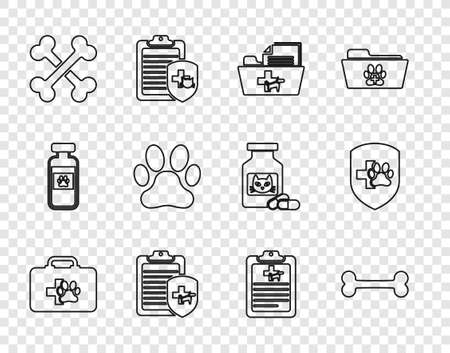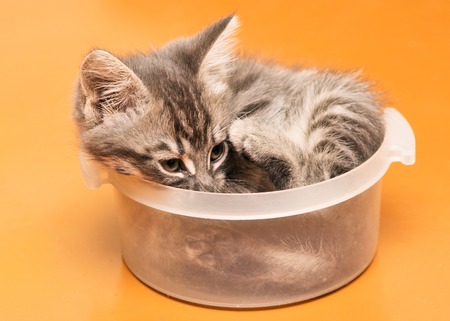1. Understanding the Link Between Obesity and Chronic Diseases in Pets
Obesity is more than just a cosmetic issue for our pets—it’s a real health concern that can seriously impact their quality of life, especially if they already live with chronic conditions. In dogs and cats, carrying extra weight puts additional strain on their bodies, making it harder to manage diseases like diabetes, arthritis, and heart disease. Here’s how obesity interacts with some of the most common chronic illnesses in pets:
How Excess Weight Affects Chronic Diseases
| Chronic Condition | Impact of Obesity |
|---|---|
| Diabetes | Extra fat tissue makes it harder for insulin to work properly, leading to poor blood sugar control. |
| Arthritis | More weight means more pressure on joints, causing pain and faster joint damage. |
| Heart Disease | The heart has to work harder to pump blood throughout a larger body, which can make existing heart problems worse. |
Why Proactive Management Matters
If your dog or cat already has a chronic health condition, addressing their weight is not just about helping them look better—it’s about helping them feel better and live longer. Carrying extra pounds can reduce their energy levels, make symptoms worse, and even shorten their lifespan. That’s why working closely with your vet to manage both their weight and underlying health issues is so important.
Key Takeaway: Small Steps Matter
Proactively managing your pet’s weight can help ease the burden on their body and improve the effectiveness of treatment for chronic conditions. Even small changes—like adjusting meal portions or increasing gentle activity—can make a noticeable difference over time.
2. Partnering with Your Veterinarian
When it comes to managing obesity in pets who already have chronic health conditions, working hand-in-hand with your veterinarian isn’t just helpful—it’s essential. Every pet is unique, and their weight loss journey needs to be tailored to their individual needs, especially if they’re dealing with issues like diabetes, arthritis, heart disease, or thyroid problems.
Why Your Vet Is Your Best Ally
Your veterinarian understands how your pet’s medical history affects their metabolism, mobility, and overall well-being. They’ll help you avoid the risks of “one-size-fits-all” diets and instead create a plan that factors in your pet’s medications, physical limitations, and specific nutritional requirements.
How Vets Personalize a Weight Loss Plan
| Health Challenge | Vet’s Approach |
|---|---|
| Diabetes | Careful calorie control and choosing foods that keep blood sugar stable |
| Arthritis | Low-impact exercise suggestions and joint-friendly diets |
| Heart Disease | Sodium restriction and monitoring for safe activity levels |
| Thyroid Issues | Balancing medication timing with feeding schedules |
What to Expect at Your Vet Visit
- A full physical exam focused on both weight and underlying conditions
- Baseline bloodwork or other tests to track progress safely
- A clear target weight based on breed, age, and health status—not just appearance
- A step-by-step nutrition plan with specific food brands or formulas if needed
Your vet will also set up regular check-ins—either in person or via telemedicine—to adjust the plan as your pet loses weight or if their health changes. Remember, slow and steady progress is safer for pets with chronic conditions. Relying on your vet’s expertise makes all the difference for long-term success.

3. Nutrition Strategies for Pets with Special Needs
Understanding Diet Adjustments
When managing obesity in pets who also have chronic health conditions, it’s essential to tailor their diet to fit both needs. For example, a dog with arthritis and extra weight might benefit from a food that supports joint health while also being low in calories. Cats with diabetes may need foods that help control blood sugar alongside supporting weight loss. Always talk with your veterinarian before making changes, but here are some practical tips you can start with:
Portion Control: Keeping Calories in Check
One of the easiest ways to help your pet lose weight safely is by measuring their food and sticking to set meal times. Free-feeding (leaving food out all day) can make it hard to track how much your pet eats. Use a measuring cup or scale, and follow your vet’s recommendations for calorie intake.
| Pet Type | Common Health Issues | Recommended Portion Strategy |
|---|---|---|
| Dog | Arthritis, Heart Disease | Low-calorie kibble, Omega-3 supplements, Smaller meals more often |
| Cat | Diabetes, Kidney Disease | High-protein/low-carb diets, Wet food to increase hydration, Strict portioning |
Choosing Specially Formulated Foods
The U.S. market offers many options labeled as “weight management,” “joint support,” or “sensitive stomach.” These foods are designed to meet specific dietary needs while controlling calories or supporting chronic conditions. Some trusted American brands include Hill’s Science Diet, Purina Pro Plan Veterinary Diets, Blue Buffalo Natural Veterinary Diet, and Royal Canin Veterinary Diet.
Reading Pet Food Labels: What Matters Most?
- Calories per Cup/Can: Look for this on the packaging to make sure you’re not overfeeding.
- Main Ingredients: The first few ingredients should be quality proteins or fibers, not fillers like corn or by-products.
- Nutritional Additions: Glucosamine for joints, L-carnitine for fat metabolism, and added fiber can help pets with special needs.
- AAFCO Statement: This shows the food meets basic nutritional standards set by the Association of American Feed Control Officials.
Sample Label Comparison Table
| Food Name | Main Purpose | Calories per Cup/Can | Key Ingredients/Benefits |
|---|---|---|---|
| Hill’s Science Diet Perfect Weight (Dog) | Weight Management | 291 kcal/cup | Chicken, Pea Fiber, L-carnitine for fat burning |
| Purina Pro Plan DM (Cat) | Diabetes Support & Weight Loss | 162 kcal/can (wet) | High protein, low carb formula; helps control blood sugar |
| Royal Canin Renal Support (Cat) | Kidney Health & Weight Control | 145 kcal/can (wet) | Easily digestible proteins, low phosphorus, controlled calories |
| Blue Buffalo Healthy Weight Chicken & Brown Rice (Dog) | Sensitive Stomach & Weight Loss | 324 kcal/cup | No by-products; added fiber; supports digestion and satiety |
If your pet has both obesity and another chronic condition, finding the right food can take some trial and error—don’t be afraid to ask your vet about specific brands or formulas that fit your pet’s unique needs. And always transition slowly when changing foods to avoid upsetting their stomach.
4. Safe and Enjoyable Activity Modifications
When managing obesity in pets with chronic health conditions, regular exercise is still important—but it’s essential to adjust activities based on your pet’s physical limitations. Not every dog or cat can go for a long hike or play fetch for hours, especially if they have arthritis, heart issues, or other medical concerns. Here are some practical ways to keep your furry friend moving safely and happily, while fitting into a typical American lifestyle.
Low-Impact Activities for Limited Mobility
Low-impact exercises help pets burn calories without putting too much strain on their bodies. These activities are gentle on the joints and can be done indoors or outdoors, making them great options year-round.
| Activity | Description | Best For |
|---|---|---|
| Leisurely Walks | Short, slow walks around the neighborhood or park. Avoid steep hills and rough terrain. | Dogs with arthritis or respiratory issues |
| Swimming | If available, swimming in a safe pool or pet-friendly lake offers resistance without joint impact. | Dogs with joint pain (not suitable for all breeds) |
| Indoor Obstacle Course | Use pillows, towels, and boxes to create a simple maze. Encourage slow movement with treats. | Cats and small dogs with limited mobility |
| Treat Puzzles & Toys | Interactive toys that require gentle batting or rolling to get treats out. | Cats and dogs needing mental stimulation |
| Tug-of-War (gentle) | A light game using a soft toy; avoid rough pulling. Great for bonding. | Dogs who love play but need to avoid running/jumping |
Adaptations for Chronic Health Conditions
If your pet has a specific condition like heart disease, diabetes, or chronic pain, always consult your veterinarian before starting any new activity. Here are a few general tips:
- Pace Yourself: Break exercise into shorter sessions throughout the day instead of one long walk or playtime.
- Avoid Overheating: Walk during cooler times of day and provide water breaks—especially in warmer climates common in many U.S. regions.
- Surface Matters: Soft grass or carpeted areas reduce impact compared to concrete or tile floors.
- Monitor Signs: Watch for limping, heavy panting, or reluctance to move—these mean it’s time to stop and rest.
Mental Enrichment as Exercise
Mental activity counts toward calorie burning too! Try food-dispensing toys, hide-and-seek with favorite treats, or gentle training sessions using positive reinforcement. Many American households enjoy spending time together watching TV in the evening—use this as an opportunity to do easy training games or puzzle toys during family downtime.
Sample Daily Activity Plan for Pets with Limited Mobility
| Time of Day | Activity |
|---|---|
| Morning | Short walk outside (5-10 minutes) |
| Noon | Treat puzzle toy or slow feeder meal |
| Afternoon | Gentle indoor obstacle course (supervised) |
| Evening | Mental enrichment: training session or scent game with hidden treats around the living room |
| Before Bed | Cuddle time and light stretching (if tolerated) |
Remember: Every pet is unique!
The key is to find what your pet enjoys and feels comfortable doing within their abilities. Adapting activities ensures your companion stays active—and happy—while you’re helping them manage their weight and chronic health needs.
5. Monitoring Progress and Staying Motivated
Tracking Your Pet’s Weight Loss Journey
Helping a pet manage obesity, especially when they have chronic health conditions, is a marathon, not a sprint. Regular tracking makes all the difference. Use a calendar or a simple chart on your fridge to log weekly weigh-ins. Even small changes count! Most vet clinics are happy to let you use their scales—just call ahead.
| Week | Weight (lbs) | Notes |
|---|---|---|
| 1 | 42 | Starting weight |
| 2 | 41.5 | Reduced treats, added walks |
| 3 | 41.2 | No table scraps this week! |
Recognizing and Celebrating Small Victories
It’s easy to overlook progress when the numbers move slowly. Celebrate little wins, like your pet being able to walk longer without tiring or fitting into their harness more comfortably. Share these moments with your family—maybe a “Pet Progress Photo Day” every month! It keeps everyone motivated and helps your pet feel loved through positive attention.
Troubleshooting Plateaus
If your pet’s weight loss stalls for more than two weeks, don’t get discouraged—it’s common, especially with underlying health issues. Double-check food portions (it’s easy to “eyeball” too much), make sure treats aren’t sneaking in, and consult your vet if needed. Sometimes medical adjustments are necessary as your pet’s body changes.
Building a Supportive Home Routine
The whole family can pitch in! Assign daily roles—one person for feeding, another for walks, someone else for playtime. Post the routine somewhere visible so everyone stays on track. Here’s an example schedule:
| Time of Day | Activity | Family Member Responsible |
|---|---|---|
| 7:00 AM | Morning walk (10 minutes) | Dad |
| 8:00 AM | Breakfast & medication check | Alice |
| 6:00 PM | Dinner prep (measured food) | Mom |
| 7:30 PM | Gentle playtime or stretching exercises | Bobby |
The Takeaway on Staying Motivated Together
No one has to go it alone! Family teamwork and regular check-ins keep everyone accountable—and make the process more fun for both pets and people. Remember: consistency is key, patience pays off, and every small step forward is worth celebrating.
6. Long-Term Success and Relapse Prevention
Helping your pet reach a healthy weight is a big achievement, especially when chronic health conditions are involved. But the real challenge often begins after the weight is lost—keeping those pounds off for good. Here’s how you can support your pet’s long-term health and prevent relapse.
Keep Up the Healthy Habits
Consistency is key when it comes to maintaining weight loss in pets with chronic health issues. Sticking to a regular feeding schedule, measuring portions accurately, and choosing low-calorie treats can make all the difference. Try making these routines part of your daily life so they become second nature for both you and your pet.
| Healthy Habit | How It Helps Your Pet |
|---|---|
| Scheduled Meals | Prevents overeating and keeps metabolism steady |
| Portion Control | Reduces calorie intake without causing hunger |
| Low-Calorie Treats | Allows rewarding your pet without extra pounds |
| Daily Activity | Keeps joints mobile and burns calories safely, even with chronic issues |
Regular Health Checkups Matter
Your vet is your best partner in long-term weight management, especially for pets dealing with chronic diseases like diabetes, arthritis, or heart problems. Schedule checkups at least twice a year—or more often if recommended. These visits help track your pet’s progress, adjust medications if needed, and catch any early signs of weight regain or complications.
What to Discuss With Your Vet:
- Any changes in appetite or energy level
- Difficulties sticking to exercise routines due to pain or illness
- Concerns about medication side effects and weight changes
- Nutritional needs specific to your pet’s health condition
Create a Supportive Home Environment
The way you set up your household can make it easier to keep your pet on track. Store food out of reach, have everyone in the family follow the same feeding guidelines, and avoid table scraps—even when those puppy eyes beg for just one bite. If multiple people care for your pet, use a chart or app to track meals and treats so there are no accidental extras.
Sample Household Feeding Chart:
| Day/Meal Time | Person Responsible | Food Amount Given | Treats Given? |
|---|---|---|---|
| Monday AM | Alice | 1/2 cup kibble | No treats |
| Monday PM | Bob | 1/2 cup kibble + meds in cheese (as prescribed) | 1 dental chew (low-cal) |
Watch Out for Weight Regain Triggers
Pets with chronic health problems may be more sensitive to changes in diet or activity. Keep an eye out for triggers that might cause weight gain again—like stress from changes at home, new medications, or less exercise during bad weather. If you notice the scale creeping up, don’t wait—reach out to your vet right away for advice.
If you approach weight management as an ongoing process rather than a one-time fix, you’ll give your furry friend the best shot at staying healthy despite chronic challenges. Small steps each day add up to lasting results!


